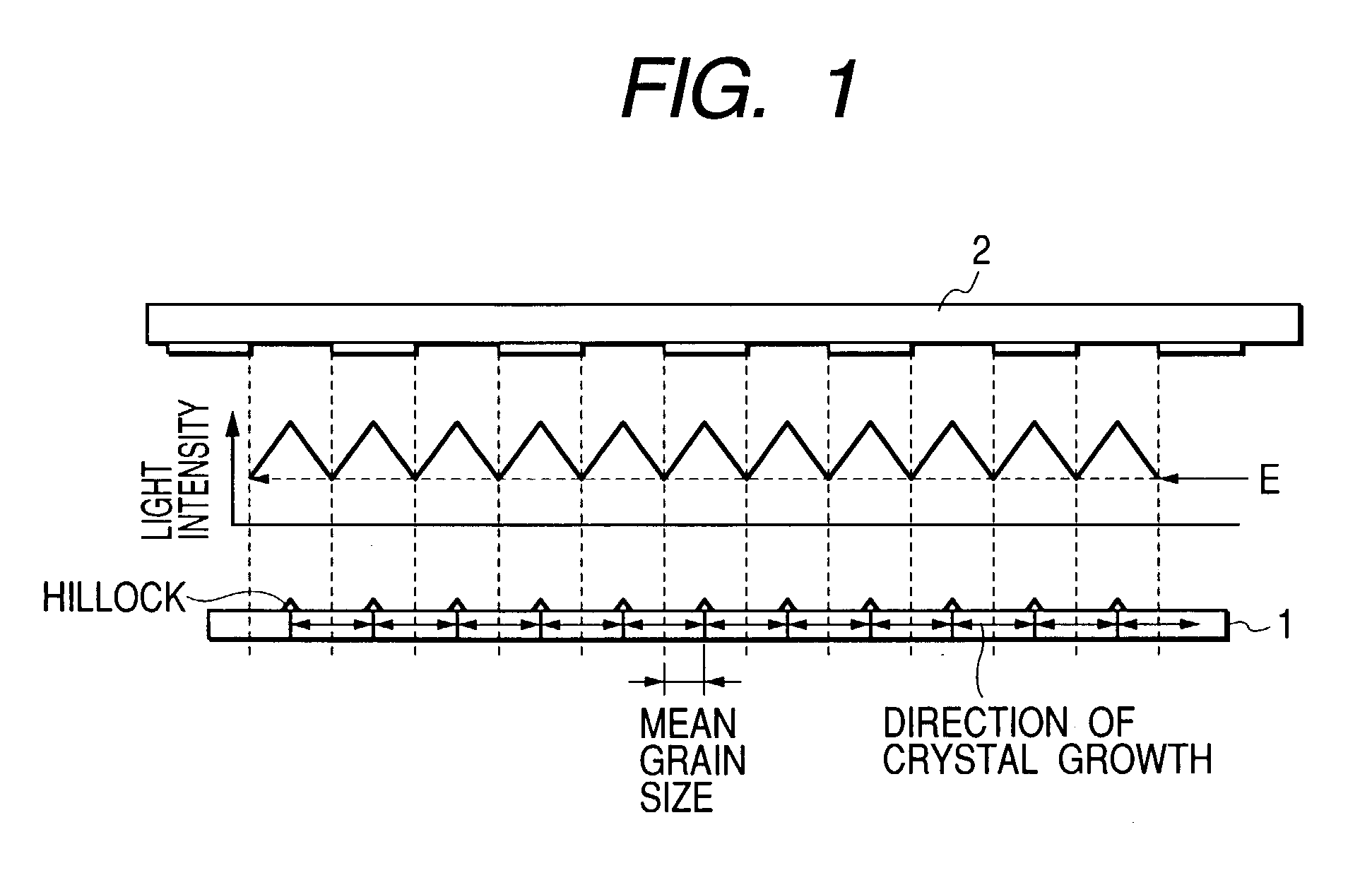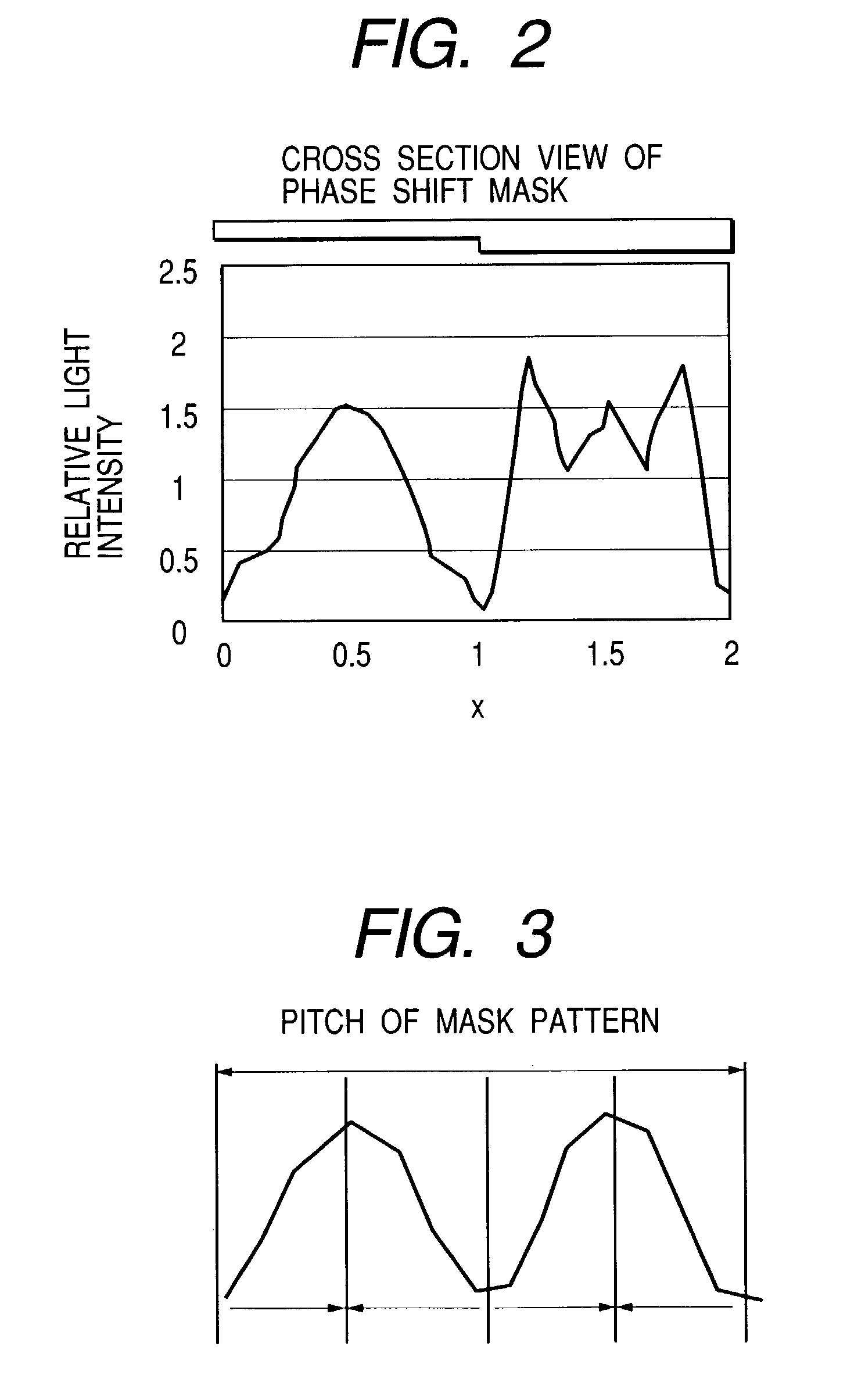Semiconductor thin film and process for production thereof
- Summary
- Abstract
- Description
- Claims
- Application Information
AI Technical Summary
Benefits of technology
Problems solved by technology
Method used
Image
Examples
example 1
[0062]The laser annealing process according to the present invention is accomplished by using an apparatus shown in FIG. 13. There is shown a sample substrate 1 having an amorphous silicon film formed thereon. There is also shown a mask 2 which is placed 0.6 mm above the substrate 1. This mask is a periodic phase-shifting mask with a stripy pattern scribed at a pitch of 2 μm. (An enlarged side view of the substrate 1 and the mask 2 is shown in FIG. 1.) There is shown a pulsed laser beam 3 specified below.[0063]XeCl Excimer Laser Generated by Model STEEL 1000 of Lamda Physik Corporation.[0064]Wavelength: 308 nm[0065]Pulse intervals: approx. 27 ns[0066]Repeating frequency: 300 Hz
The laser beam 3 is shaped into a linear beam, 365 mm in long axis and 400 μm in short axis, by an optical system consisting of a homogenizer 7 (from Micro Las Corporation) and cylindrical lenses 6 and 5. There is shown a substrate stage 4 which feeds the substrate at a prescribed rate during laser irradiation...
example 2
[0072]This example uses the same equipment as in Example 1 but differs in the way of irradiation. In this example, irradiation may be carried out in two steps. Irradiation in the first step is through a mask pattern as with the foregoing embodiment, and no mask pattern is used for irradiation in the second step. Irradiation in this manner yields a thin film consisting of isotropic crystal grains and having low hillocks. Alternatively, irradiation may be carried out such that no mask pattern is used in the first step and a mask pattern is used in the second step. The effect of irradiation in this manner is that the second step (with a mask pattern) ensures crystallization at the part where the light intensity is very low. This effect permits the process to be run with low laser energy.
example 3
[0073]This example uses the same equipment as in Example 1 except for the phase-shifting mask in which the stripy pattern has a pitch of 3 μm. In this example, the mask is 0.9 mm away from the substrate and the rate of scanning is 30 mm / s for 4-shot overlapping. Scanning is carried out in a direction which is aslant about 0.17 degrees with respect to the mask so that the shift of the pattern is 0.2 μm as shown in FIG. 6. This is because the interval of hillocks is 1.5 μm and hence the shift should be smaller than 0.325 μm (1.5 μm divided by 4) for 4 shots on the same spot. Thus, repeating overlapping shots four times with a specific amount of shift reduces hillocks.
PUM
 Login to View More
Login to View More Abstract
Description
Claims
Application Information
 Login to View More
Login to View More - R&D
- Intellectual Property
- Life Sciences
- Materials
- Tech Scout
- Unparalleled Data Quality
- Higher Quality Content
- 60% Fewer Hallucinations
Browse by: Latest US Patents, China's latest patents, Technical Efficacy Thesaurus, Application Domain, Technology Topic, Popular Technical Reports.
© 2025 PatSnap. All rights reserved.Legal|Privacy policy|Modern Slavery Act Transparency Statement|Sitemap|About US| Contact US: help@patsnap.com



